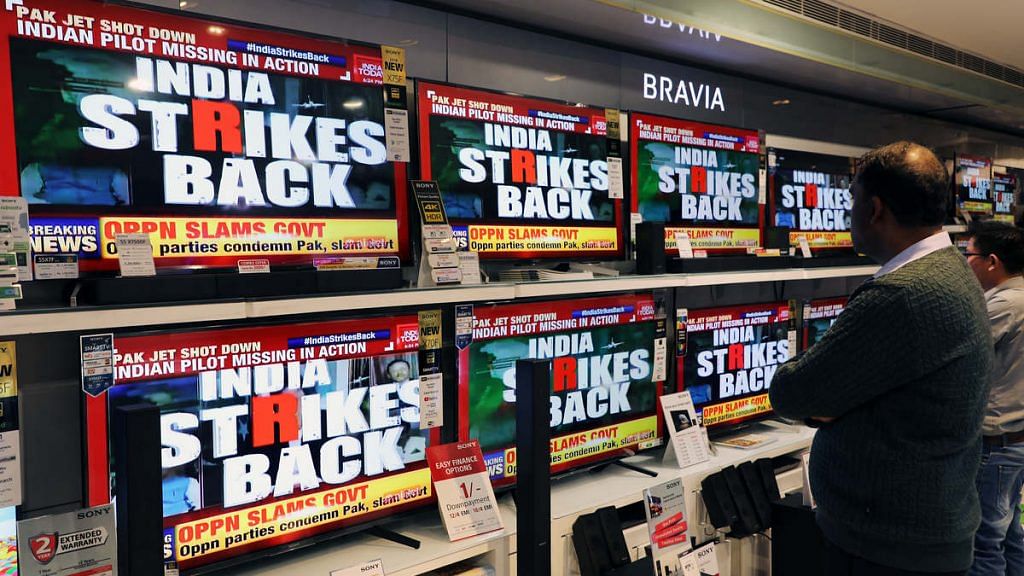New Delhi: Mumbai Police Commissioner Param Bir Singh said at a press conference Thursday that they are looking into an alleged scam involving TRP manipulation by three channels, Fakt Marathi, Box Cinema, and Republic TV.
The channels have been accused of manipulating the framework of the Broadcast Audience Research Council (BARC), the sole provider of marketing information or marketing research insight on TV audiences in India, to claim higher viewership.
Viewership data is key to advertising revenues, which can make such manipulation profitable for TV channels.
In Episode 589 of Cut the Clutter, ThePrint Editor-in-Chief Shekhar Gupta explains how TV ratings are calculated, and what the current controversy is about.
Also Read: How media has hit the self-destruct button in Arnab’s Republic-vs-other TV channels war
BARC and its role
Set up in 2010, BARC is a joint initiative of the Broadcasting Foundation of India and Advertising Association of India. It provides comprehensive data on consumers, which is used by TV channels to gain maximum revenue through ads that form the lifeblood of television and print media.
The data also helps advertisers decide which platform to issue ads to in order to get maximum reach.
This data is derived from bar-o-meters installed at households in different cities. Bar-o-meters are panels installed in certain households with a switch for every individual member of the family. They record what channels are being watched by each member of the family, and for how long. There are about 44,000 such families across the country.
BARC hires marketing research firms to keep tabs on the bar-o-meters to get viewership data.
English TV news audiences constitute about one and a half per cent of the total audience, or about 3 out of 200 people. According to an industry source, there are only 499 households that have panels for English news channels.
If TV channels even know the details of just a few of these households, they can attempt to manipulate data by offering inducements to its members, as suggested by veteran journalist Prannoy Roy in this article.
Another way of fixing these impressions is by getting cable operators to make a certain channel the ‘landing page’ for their consumers. Landing page is the one your TV opens to everytime you switch it on, and this practice can give channels an undue advantage.
In the current controversy, BARC has alleged that information regarding certain households was leaked to channels by employees of an agency involved in the process, Hansa Research Group.
Viewer impressions
Alleged manipulation of ratings in the pre-BARC days gave TRPs a bad name. Under the new set-up, the term TRP has been replaced with impressions, which denote the number of viewers on your channel over a week, in a time-weighted manner.
The BARC also applies a confidential coefficient, like an algorithm, to the data, before arriving at the final viewership numbers.
In the latest data provided for 26 September-2 October, Republic TV has 50,56,000 impressions, followed by Times Now at 18.72 lakh, and India Today with 18.12 lakh. CNN News 18 is next with 12.26 lakh impressions.
Since advertisement revenues depend on these impressions, the competition is tough and the pressure to be number one is incredible.
The bigger picture
News channels’ impressions — even those of market leaders — are far lower than those for general entertainment channels. For example, the number of impressions recorded by Star Plus, according to the latest BARC data is 889 million, with Star Utsav further ahead at 1.03 billion. Even sports channels — for example, those airing the IPL right now — register massive impressions.
This means that these channels corner the bulk of ad revenue, leaving just “leftovers” for news channels.
According to a report by FICCI and Ernst and Young, the revenue from India’s TV industry last year was Rs 78,000 crore, of which news channels accounted for just about 3 per cent.
This scramble for impressions is yet another reason why the audience ought to pay for journalism it likes.
Also Read: Republic vs the Rest — Aaj Tak calls out ‘TRP chor’, NDTV on madaari, ABP says people betrayed
